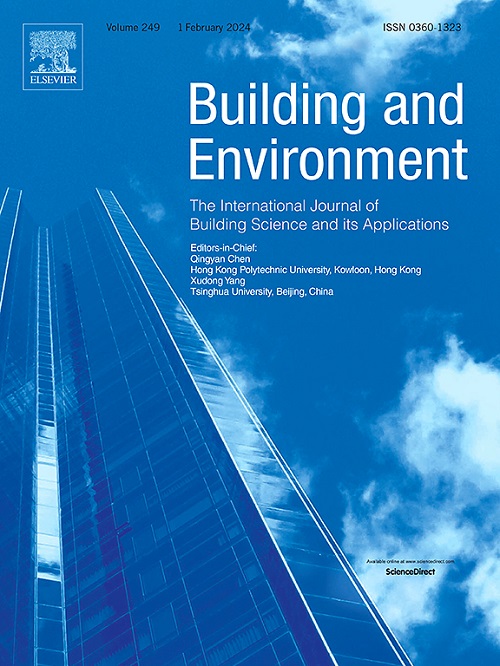Validation study of cross-ventilation in a realistic building geometry: RANS, SAS and LES
IF 7.1
1区 工程技术
Q1 CONSTRUCTION & BUILDING TECHNOLOGY
引用次数: 0
Abstract
The validation of computational fluid dynamics (CFD) simulations of natural cross-ventilation flow with wind tunnel (WT) measurements is important in view of accurate and reliable numerical simulations. A review of the literature indicates that the majority of previous CFD and WT measurement studies employed a simplified generic single-zone building with a prismatic shape. The objective of this study is the validation of isothermal CFD simulations of two different realistic building models resembling a pitched roof single-story house, both without (case 1) and with internal partition (case 2). The CFD simulations were conducted using the 3D steady Reynolds-averaged Navier-Stokes (RANS) approach with the SST k-ω, RLZ k-ε and RNG k-ε turbulence models, scale-adaptive simulations (SAS) with the SST k-ω model, and large eddy simulations (LES) with the Smagorinsky-Lilly subgrid-scale model. The evaluation was performed in two parts: impact of turbulence model and impact of internal partition. The results show that LES and SAS exhibit a good agreement with WT results, outperforming RANS for the two cases. When considering only indoor streamwise mean velocity, for case 1, 97 % and 73 % of the sampled LES and SAS velocities fall with the uncertainty band of the WT measurements. For case 2, these values are 92 % and 75 % for LES and SAS, respectively. Steady RANS provides an agreement of only 56 % and 63 % for case 1 and case 2, respectively.

求助全文
约1分钟内获得全文
求助全文
来源期刊

Building and Environment
工程技术-工程:环境
CiteScore
12.50
自引率
23.00%
发文量
1130
审稿时长
27 days
期刊介绍:
Building and Environment, an international journal, is dedicated to publishing original research papers, comprehensive review articles, editorials, and short communications in the fields of building science, urban physics, and human interaction with the indoor and outdoor built environment. The journal emphasizes innovative technologies and knowledge verified through measurement and analysis. It covers environmental performance across various spatial scales, from cities and communities to buildings and systems, fostering collaborative, multi-disciplinary research with broader significance.
 求助内容:
求助内容: 应助结果提醒方式:
应助结果提醒方式:


